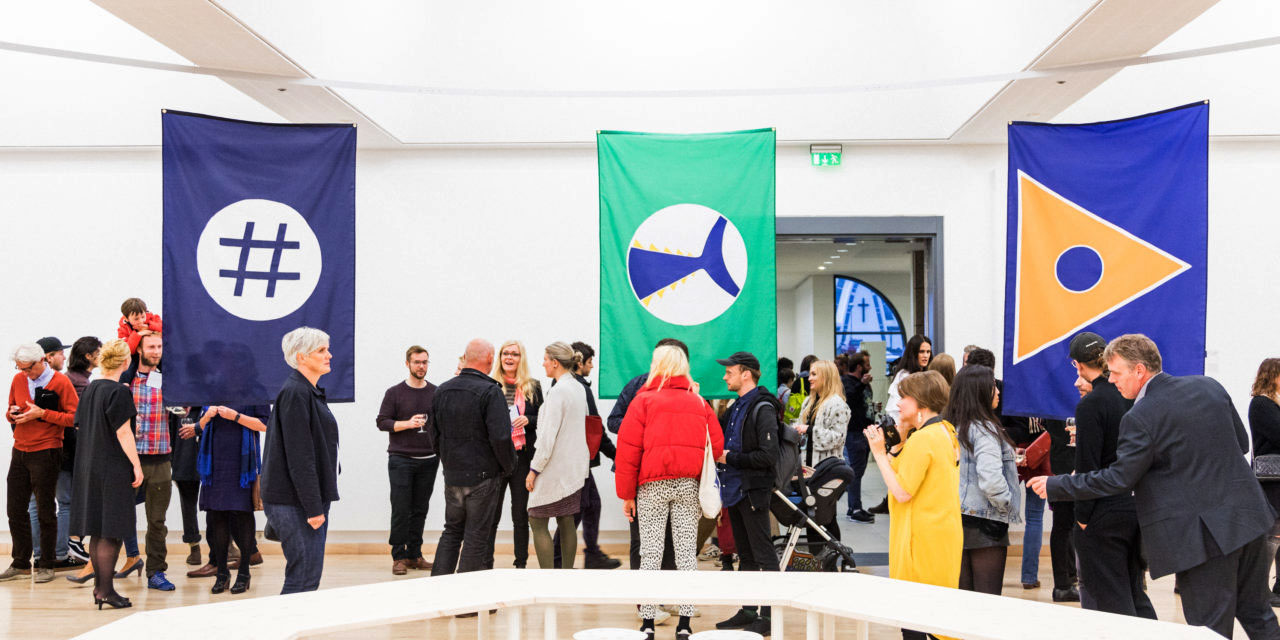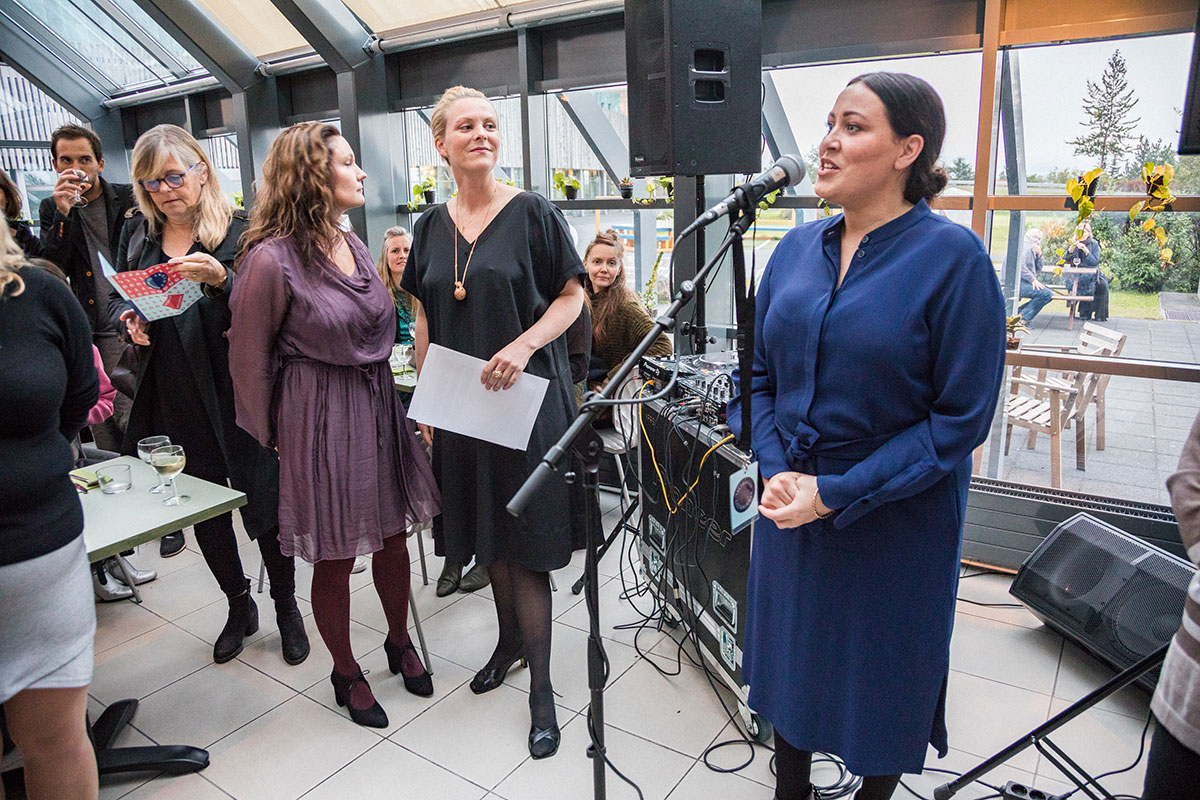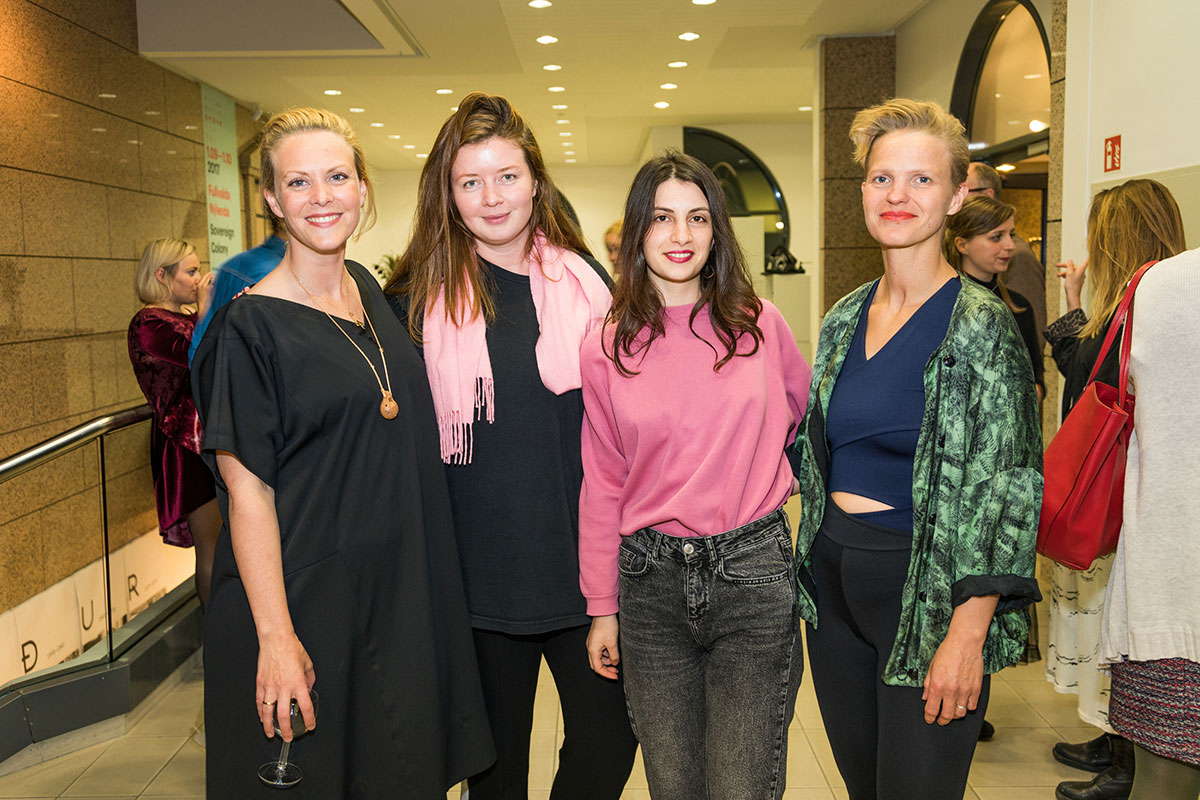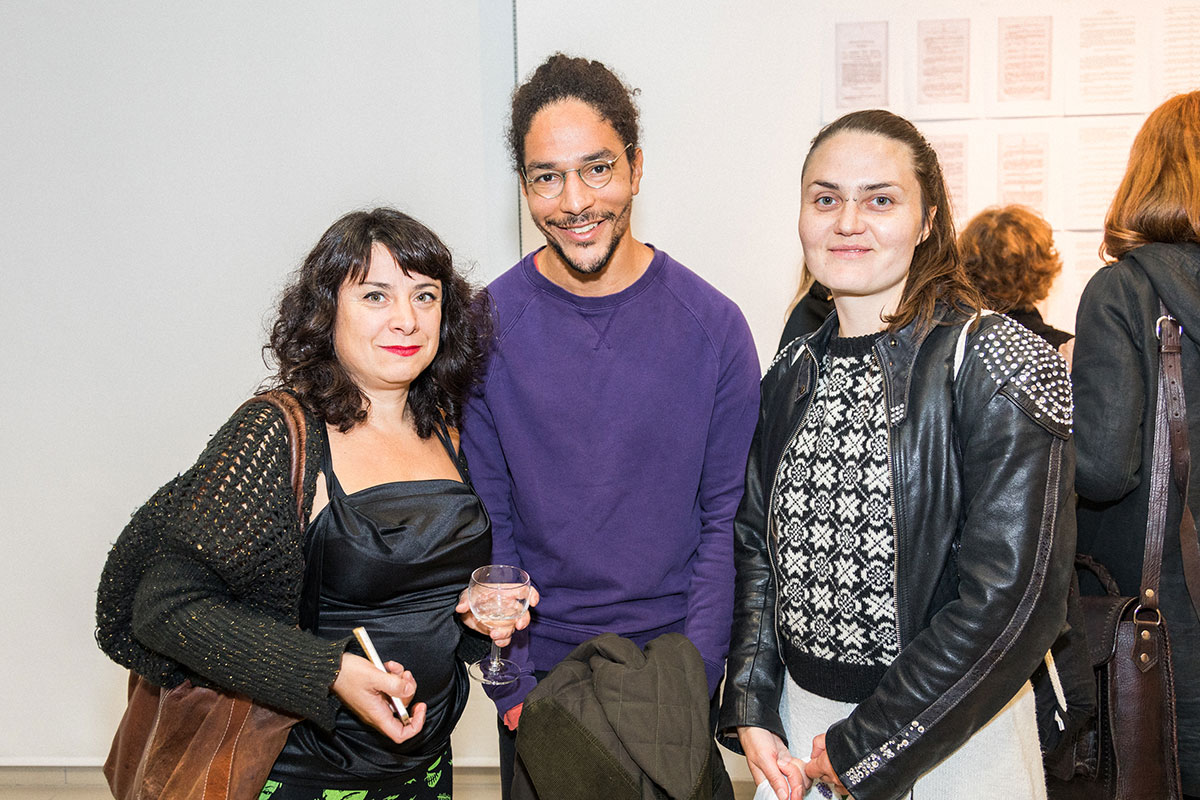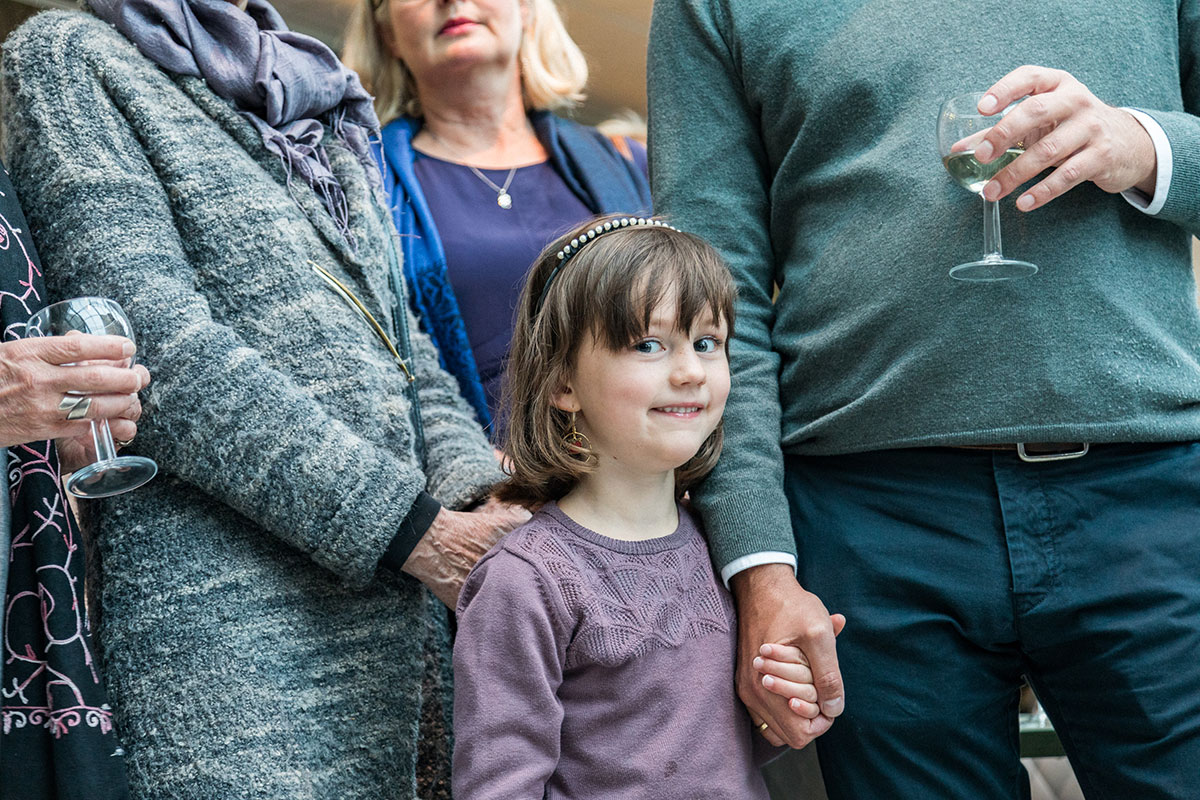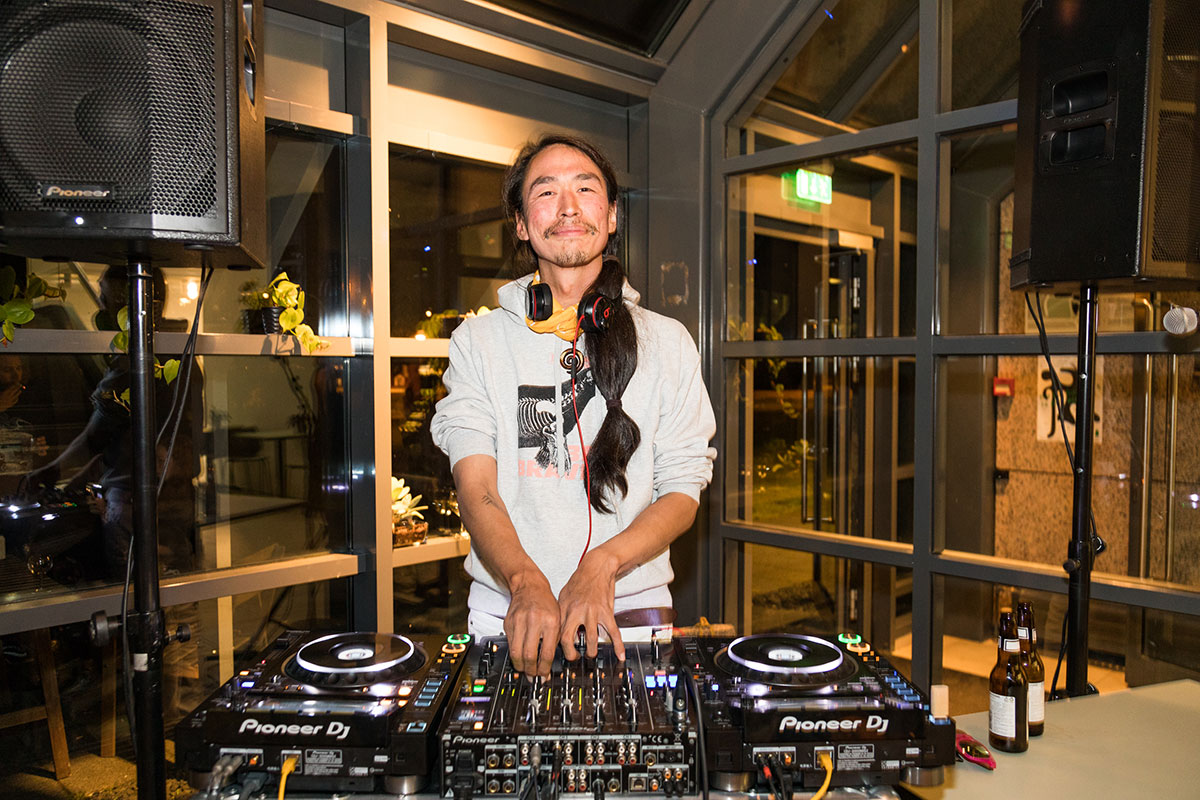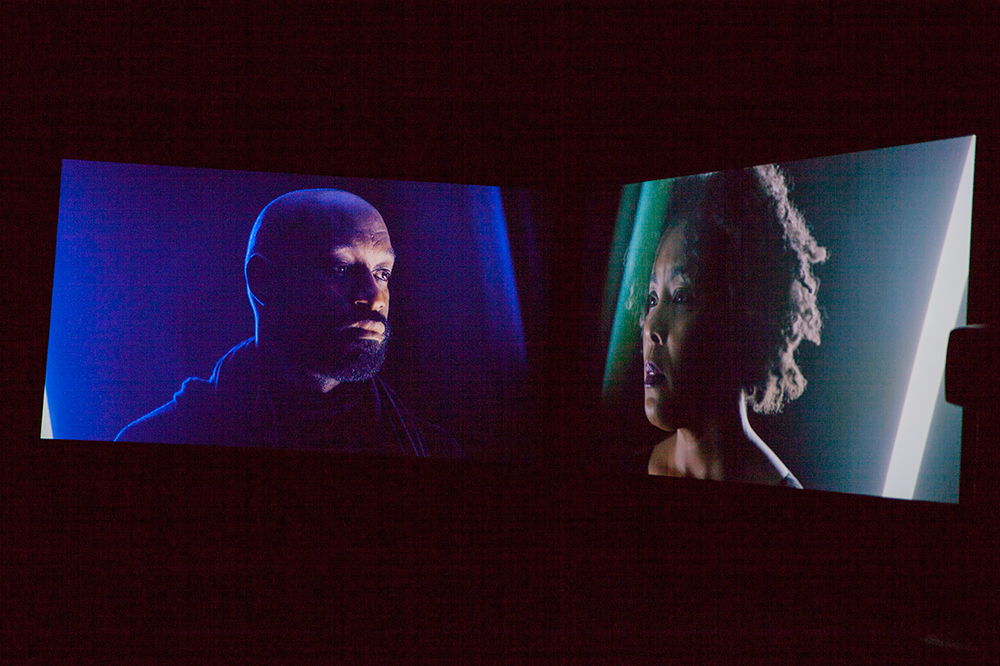
Visual art experiment wins the Berlinale

Visual art experiment wins the Berlinale
The Berlinale film festival is the first international film festival of the A-level status in the festival calendar each year. This year it took place during the 15th to the 25th of February. Judging from mainstream media pictures and coverage one might think that the festival is all about glamour and red carpet. That is however not the case for film and video art enthusiasts and artists who look at the festival as an important hub on the German and international expanded film and video art scene. The films in the main competition for the prestigious Golden Bear take very different positions and can partly be looked at as a showcase of the many festival sections.
This year an experimental film, that could easily be said to be a representative of the Forum section, won the award. This is the film Touch Me Not by Adina Pintilie. It should not be overlooked that this decision has an important cultural-political significance. It is a decisive statement from the international jury about where they would like the festival to head after the director Dieter Kosslick quits in 2019. It is a statement that is very important for film artists, especially in the light of a public letter signed by the most established German film directors last November, calling for more bigger names, more glamour, rather than the festival emphasize on investigation on different positions and expanding cinema. Head of jury, Tom Tykwer, explained the jury´s decision by stating that they did not want to award what cinema could already do but where cinema could head in the future. He is talking about the possibility of cinema. The direction is the one of the experiment.
 Installation view from ‘A Mechanism Capable of Changing Itself’. From left to right: ‘Strange Meetings’ by Jane Jin Kaisen, ‘Pink Slime Ceasar Shift’ by Jen Liu and ‘Café Togo’ by Musquiqui Chihying and Gregor Kasper
Installation view from ‘A Mechanism Capable of Changing Itself’. From left to right: ‘Strange Meetings’ by Jane Jin Kaisen, ‘Pink Slime Ceasar Shift’ by Jen Liu and ‘Café Togo’ by Musquiqui Chihying and Gregor Kasper
The Forum is mostly dedicated to the feature length, however, and it was in 2006 that a chairperson of the Arsenal Institute, Stefanie Schulte Strathaus, together with independent film and visual art curator, Anselm Franke, founded ‘The Forum Expanded’ side section where shorter films and videos together with installation work and performative works could join the debate. The position of Forum Expanded is to provide a critical perspective and expanded sense of cinematography. It takes the shape of an installation group exhibition and row of cinema screenings of clusters of films. The Forum has from the beginning been dedicated to experimental narrative forms, regardless of genre labels, where more creative risks have been taken than in the other sections of the festival and emphasize is put on an alternative cinematic canon. What makes the expanded section special is that it is a platform where documentary, fiction, experimental, hybrid, single-channel and multi-channel works and installation film and video works are categorized and viewed in context with one another. The platform is however not only unique, in defying conventional genre categorization and labels by screening formats, but rather in that it takes a curatorial position under an investigative title and does include both world premiers and older works of significance for the curatorial question each time.
 Still from ‘Today Is 11th June 1993’ by Clarissa Thieme.
Still from ‘Today Is 11th June 1993’ by Clarissa Thieme.
In 2018 Forum Expanded still runs as a collaborative effort of the Berlinale film festival and the Arsenal institute under the leadership of Schulte Strathaus but Anselm Franke has taken on a consultancy role while heading the film and art program of the Haus der Kulturen der Welt in Berlin. In addition to Schulte Strathaus the curatorial team consisted of Syrian filmmaker/video-artist Khaled Abdulawahed, German experimental film curator Ulrich Ziemons and artist and curator and co-founder of ‘Contemporary Image Collective’ in Cairo, Maha Maamoun. They made a team which constellation told a story about a drive for a diverse position but also cultural-political position of Germany.
This year the curatorial title was a direct quotation of Maya Deren´s 1947 marginal note on Marxism: ‘A Mechanism Capable of Changing Itself’ referring, in the case of the program, to cinema that is not only capable of change but also holds capacity to create new form of perception and additionally according to Schulte Strathaus refers to the institutional framework within which the works are being shown. Film theorist Ute Holl gave a speech at the opening reception of the Forum Expanded exhibition about the theoretical background of the title. “As Maya Deren assumed that every form of reception in the movie theatre also transformed the receptors at the same time, her concept of cinema characterized a cybernetic aggregate whose technical, sensory social and aesthetic elements were permanently changing in reciprocal fashion: A mechanism capable of changing itself.“, she continues: “It was Maya Deren´s wish that cinema should place us in a relationship with the unknown rather than subjugate us to a norm’‘, a sentiment echoed not only in the programming of Forum / Forum Expanded this year but the motivation behind the decision of the main international jury.
 Filmmaker and visual artist Clarissa Thieme.
Filmmaker and visual artist Clarissa Thieme.
As for the past years the exhibition took place both as a group exhibition at Akademie der Künste on Hansetenweg and cinema screenings that also took place at the Arsenal Institute. Judging by the exhibition the curators seemed to be, as the main international jury, searching for a new take on the past and a way to transforme it into a new vision for possibilities for the future where the key is focus on the future possibility of cinema and video art rather than rewarding tried out gestures. The artists that were invited were 58 in total. The new works were usually by the younger generation while the older works where a chosen selection from the canon of avant-garde cinema, usually from the mid 20th century scene in the United States. When looking at the achievements of the younger artists it became very clear that they had been spotted by their participation at significant German or Berlin art institutions by means of exhibition or being grant recipients or receiving a higher degree or being represented by a gallery. Few of the works had been spotted at major international biennials.
One of the artists was the well known video artist Anouk de Clercq that enjoyed a world premier of her latest work It at the Arsenal institute. The work is a collaboration with photographer Tom Callemin. It like her previous works shows a strong aesthetic position in darkness and light and what happens in between. De Clerq, who is based in Berlin, is very visible on the Berlin art scene but at the same time she was showing video works at two different prominent venues in Berlin: Künstlerhaus Bethanien in Kreuzberg and ACUD galerie in Mitte. Some people in Iceland might know de Clercq´s work but she was a recipient of SIM residency award in 2006 and took part in an exhibition at the Reykjavik edition of Safn collectors room of Petur Arason and Ragna Robertsdóttir with curator Birta Gudjónsdóttir. Since then she has travelled eight times to Iceland and even made works inspired by her time and travels there. De Clercq is one of the founders of Auguste Orts a Belgian production and distribution platform for audiovisual art projects in between genres and formats. Her works are produced by this company and funded mainly by the Flemish Audiovisual Fund but also commissions of research funds at the School of Arts University College Ghent to which de Clercq is affiliated.
 Anouk de Clercq chatting with colleagues outside Akademie der Künste.
Anouk de Clercq chatting with colleagues outside Akademie der Künste.
I met her briefly a day before the premier and asked her about what the Forum Expanded platform meant for her as an artist: “It’s absolutely brilliant to see works of my colleagues in a curated context, which is quite rare for big festivals. Usually a festival focuses on the newest of the new, premieres, etc. but here they combine new work with old work, and look for a flow in each program. And to conclude, my film friends and colleagues live all over the world so here we get chance to see each other again and exchange about the films we’ve seen, the films we are preparing, etc.“
The feeling of living in two worlds is certainly an issue for all artists that work with film and video art. There is difference of funding, of labelling, of context, discourse and expectations. I ask her how it has been for her to belong to two different worlds: “I started off in both the visual arts and in film but indeed in a parallel way: the two worlds rarely met. Since recent years though, there’s a label for what I and my colleagues do: artist film or artist moving image and so the flow between the two worlds works more easily since a couple of years. There’s a scene now which is growing stronger and it has a foothold in both film and visual arts.
Museums have become more open and curious about film and video, film festivals are looking for new ways of cinema making and so artist film came into view. It seems that this scene of artists making films, is bridging both worlds more and more.“ De Clercq herself has been very active in bridging those worlds but in the years 2015 -2017 Auguste Orts organised the project ‘On and For Production’, an initiative that was a series of meetings across Europe where issues of artists’s film production and funding were discussed with participation of leading professionals and funders of both worlds.
Christina Nord, former film editor at the Berlin newspaper ‘die tageszeitung’ and currently one of the heads of Goethe Institute´s cultural program, indeed quotes, in her article about hybrid films in the Forum / Forum Expanded catalogue, the words of filmmaker Marcin Malaszczak regarding this issue. “For filmmakers, for the work itself, the distinction doesn´t matter. These categories are only necessary when you’re applying for funding, when you want to work in the system. Then everything has to be labelled. The same applies to most festivals.“ This is the motivation for why de Clercq is bringing together financiers in the artist and the cinema film worlds, to initiate a dialogue and exchange, to bridge these two worlds.
 The curatorial team of Forum Expanded 2018. From left to right: the director Stefanie Schulte Strathaus, curator and co-founder of ‘Contemporary Image Collective’ in Cairo, Maha Maamoun, Syrian filmmaker/video-artist Khaled Abdulawahed and German experimental film curator Ulrich Ziemons.
The curatorial team of Forum Expanded 2018. From left to right: the director Stefanie Schulte Strathaus, curator and co-founder of ‘Contemporary Image Collective’ in Cairo, Maha Maamoun, Syrian filmmaker/video-artist Khaled Abdulawahed and German experimental film curator Ulrich Ziemons.
Another artist who premiered a single-channel work in the Akademie´s cinema hall is German experimental filmmaker Clarissa Thieme, a former assistant professor at the UdK and since recently a research fellow at the Berlin Center for Advanced Studies in Art and Science (BAS). Her film Today Is 11th June 1993 was developed in the frame of her artistic research fellowship at BAS that deals with the video footage contained in the Library Hamdija Kresevljakovic Video Arhive in Sarajevo. The film is one output of the research project and more artistic outputs are coming soon, a performance and video installation.
The archive consists of video footage shot during the four years of the siege of Sarajevo, both by the Kreševljakovic brothers themselves and collected from the people that lived in the city at the time. In Thieme´s film a translator sits in a booth in front of a projection of an archive footage of a homemade science fiction film in which a group of young people imagine fleeing the siege of Sarajevo by means of time machine. It is some kind of future utopia fantasy and thus an original resource for a political and social discourse. In the Q&A after the screening Thieme points out that the archive shows a perspective that is in stark contrast to the mainstream media coverage of the time and thus can serve as a window to this time.
 Akademie der Künste – one of the Forum Expanded venues at the Berlinale Film Festival
Akademie der Künste – one of the Forum Expanded venues at the Berlinale Film Festival
How to show and experience archival footage is a rich field to experiment with and Thieme does this in a very interesting way creating a bridge between then and now by echoing the intentions of the original filmmakers. The film, that appears as a simple presentation, is multi-layered and provokes connections and reflections, not only about how the Sarajevo siege was presented in generic stereotypical terms during 1993 and later but also about how current sieges are portrait in the mainstream media of today. “Forum Expanded is a hybrid platform. It´s an intercrossing of cinema and art. And this meets very much my own practice. In a very interesting way it is an artistic experiment in itself asking what cinema means nowadays and what it could be.
This emerges not just from the shown works but also from the people attending. It is a very precious think tank and laboratory“, Thieme answers when I ask her about what makes it important to show her work at the festival. “I find it very interesting that Forum / Forum Expanded is embedded in Berlinale, an A-level Film Festival with so many other sections and with a Film Market at Martin Gropius Bau of thousands of films not even listed at the regular catalogue. In a way Forum Expanded and the Film Market are two extremes. And simplifying one could say it is of course the difference between art and commercial cinema. I think we can’t ignore the fact that the different formats of distributing and financing works has a huge impact on our works. I don’t see it black & white. I have for instance a huge sympathy for distribution in the film world that aims for as many as possible people to watch your work. That is a very different approach to the exclusivity you invent by 5 editions only in which you sell an art piece.
There are positive and negative effects coming with both options in my opinion. I like to study these very carefully. Most often we don’t have the complete free choice how we produce and launch our work. But of course as an artist or filmmaker you should know the different scenarios very well to aim for what is best for the very piece you are working on now. Let’s say there are very different film bubbles under the roof of Berlinale.
For ten days people tell you they do film and they all do. But it’s like a meeting of different galaxies. Since I enjoy the edgy parts of exchange and since you find in every of these film bubbles people who truly love film and art as much as they burn for what they do Forum / Forum Expanded inside of Berlinale is a very inspiring and surprising venue for me.“
Hulda Rós Guðnadóttir
Featured image: Installation view from ‘A Mechanism Capable of Changing Itself’. 2-channel video installation ‘Third Part of the Third Measure’ by The Otolith Group.
Photos: Courtesy of the Artist


